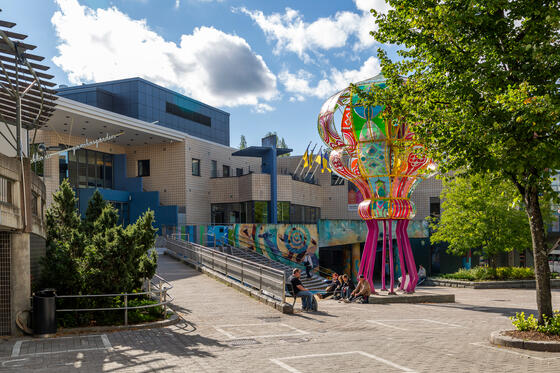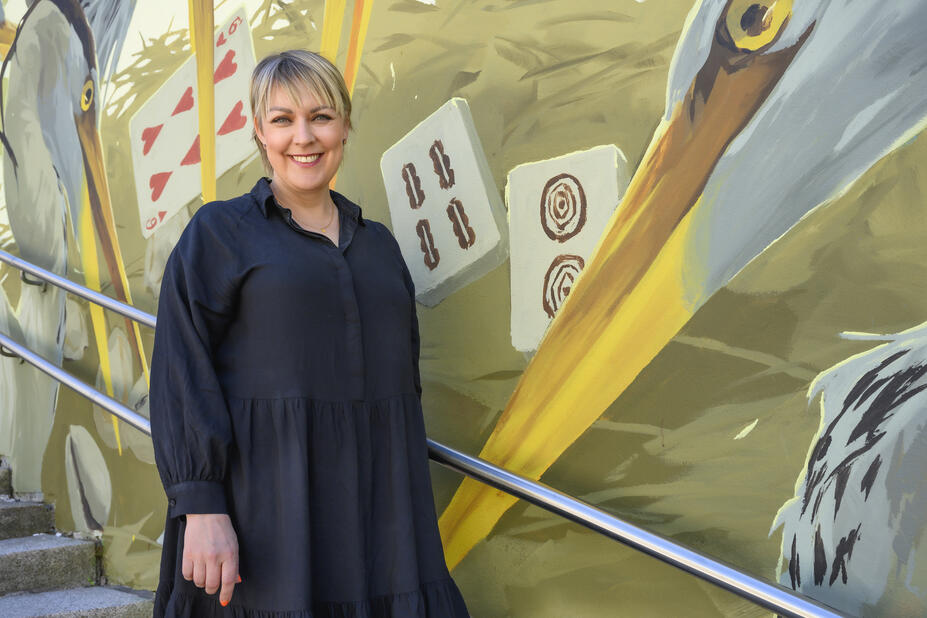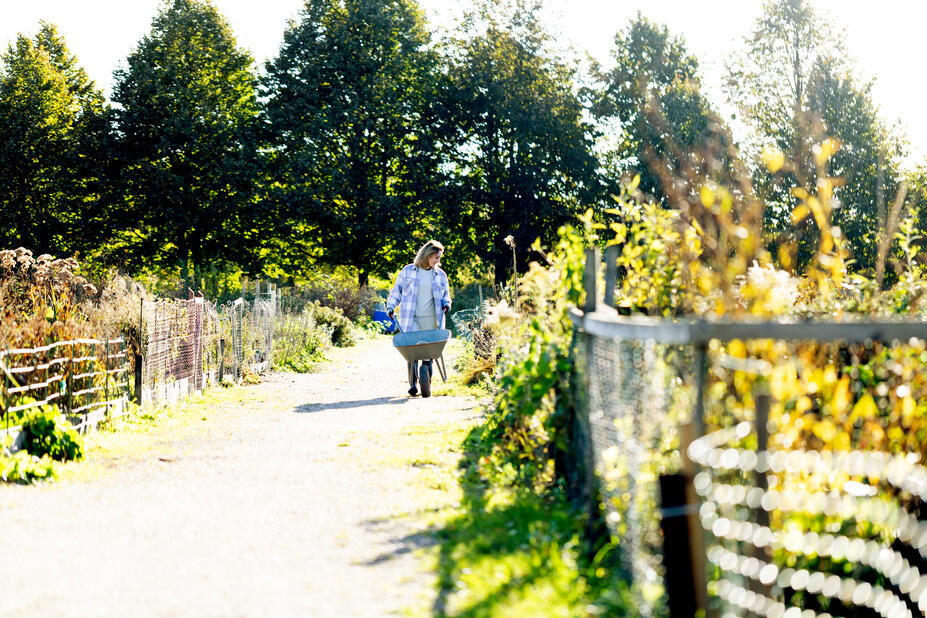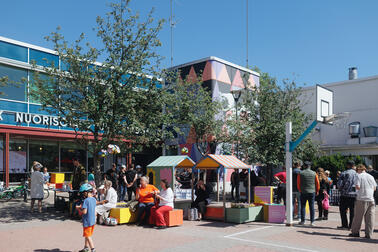Director of Kanneltalo Ia Pellinen says that Western Helsinki does not have the same clear identity as many districts in East Helsinki do. Instead, people from Kannelmäki are very proud of their own hood. And not without reason.
“As rough as it may be, Kannelmäki is absolutely magnificent. It’s incredibly well connected, and there is a lot nature around. There are species in the Mätäjoki area that you can’t find anywhere else. It doesn’t take a long walk to get to an almost countryside-like atmosphere.”
Pellinen also unabashedly praises Kanneltalo, despite it being her own charge. Pellinen makes a convincing argument: the magnificent cultural centre consists of a beautiful library, Adult Education Centre activities, youth services, a popular café, a gallery, as well as numerous events.
As rough as it may be, Kannelmäki is absolutely magnificent. It’s incredibly well connected, and there is a lot nature around. There are species in the Mätäjoki area that you can’t find anywhere else. It doesn’t take a long walk to get to an almost countryside-like atmosphere.
As rough as it may be, Kannelmäki is absolutely magnificent. It’s incredibly well connected, and there is a lot nature around. There are species in the Mätäjoki area that you can’t find anywhere else. It doesn’t take a long walk to get to an almost countryside-like atmosphere.
She points out that the large construction projects in the Kannelmäki area will only be realised after many years, but there are already a number of smaller projects being carried out in the area. They can help to boost the attractiveness of the area.
These large projects focus, among other things, on the vicinity of the Malminkartano station, the Malminkartanon sydän project, and the surroundings of the Kaari shopping centre.
Kannelmäki and Malminkartano will see new housing and commercial construction. The Vihdintie light rail is intended to pass through Lassila to Kantelettarentie, all the way to shopping centre Kaari.
Working with the residents
The aim is to carry out the urban renewal together with the residents. Pellinen says that there is a group of a few active people in the area that they want to add to. This is also supported by the Kantsu Village Festival 3.0 in August. That is when Kanneltalo and Sitratori in front of it will be reserved for the residents, this year for the third time. Residents and other actors in the area are welcome to hold almost any activity or programme that they want. The city supports the event with technology and permits, for example.
“We are very careful to not influence the content itself, and strive to leave it in the hands of the residents from start to finish.”
According to Pellinen, the Village Festival is one example of the area's sense of community. Kanneltalo, in the middle of it all, wants to create opportunities for independent activities by Kannelmäki people, for Kannelmäki people, in other times than the Festival as well. At Kanneltalo you can find theatre plays, dance performances, art exhibitions, concerts and films. You can rent spaces and hold events.
The Kanneltalo café has become popular, which Pellinen is very happy about. Many will stop by for coffee or a visit to the library and, at the same time, find out about other activities.
Pellinen says that Kanneltalo is seen from by the city organization as an organizer of entertainment services that brings joy and activities while the big urban renewal projects proceed.
Among other quick improvements, he cites the restoration of the Sitratori murals and events such as city dances that are held throughout the summer, as examples.
Cooperation with Helsinki Urban Art in Malminkartano
The residents of Malminkartano also use the offerings of Kanneltalo, but the Malminkartano also has its own community centre, Renki. It is maintained by the residents’ association, who operate a café there on weekdays. Renki is especially popular with families with children.
“For the second year, cooperation with the Helsinki Urban Art Association is underway in Maltsu. Its purpose is to introduce culture into people's daily lives and involve local residents in the planning and implementation of events.
The association has organised, among other things, the Maltsu live! event, which, in August last year brought, among other things, live music to the streets. This summer, we are again cooperated with the HUA and, in addition to events, brought workshops to Malminkartano this summer.
The locals actively join the events, but Pellinen hopes that more people will be involved in organising them as well.
“We hope to entice people to try out to plan and implementation together first. When you see what you get personally from doing it and what the neighbourhood receives, your enthusiasm grows and sticks to others.





